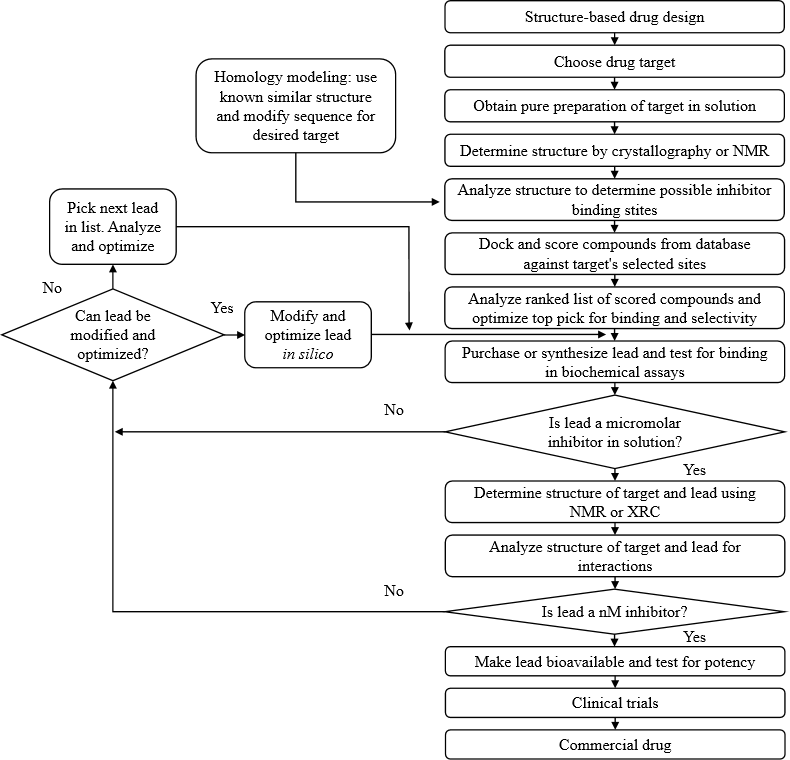BOC Sciences' structural biology division provides services ranging from the identification of new targets to the structure-based drug discovery (SBDD) of the final structure. Our core technology and expertise enable us to effectively reduce the average time required for drug discovery and provide leading SBDD services for innovative preclinical drug development for customers in the global biotechnology and pharmaceutical industries.
 Fig 1 Outline of structure-based drug discovery (SBDD).1
Fig 1 Outline of structure-based drug discovery (SBDD).1
SBDD designs bioactive compounds based on the structure of the target or the structure information of known active compounds. In order to speed up the drug discovery and development process in a more cost-effective manner and minimize the failure rate, the SBDD method has received a great deal of attention at different stages of drug discovery and development, which can reduce the cost from target identification to investigational new drug (IND) filing by 50%.
 Fig 2 The Iterative Process of Structure Based Drug Design.2
Fig 2 The Iterative Process of Structure Based Drug Design.2
Molecular docking is widely used in the field of drug design by studying the interaction between small molecular ligands and receptor biomolecules and predicting its structural mode and affinity. Our molecular docking service combines the knowledge of pharmacokinetics, pharmacodynamics, chemical informatics, bioinformatics and other disciplines to optimize your molecules and help customers in the process of hit identification and lead optimisation, including protein macromolecule, protein nucleic acid docking and protein ligand docking.
Virtual screening is a established computational approach, which uses knowledge to select potentially bioactive compounds for screening. BOC Sciences provides comprehensive, high-quality virtual screening service that can cost-effectively identify matches for experimental screening, help customers identify the most promising candidates, and reduce the risk of failure in the lead optimization process.
De novo drug design is an iterative process, which involves structure determination of the lead target complexes and the design of lead modifications using molecular modeling tools. BOC Sciences provides structure-based or ligand-based de novo design service to provide cost-effective drug design solutions for your drug discovery projects / programs.
Homologous modeling technology is widely used in the process of SBDD because of its simplicity, efficiency and high accuracy. BOC Sciences's homologous modeling service can construct the three-dimensional structure of the target protein, help customers understand the structure-activity relationship of the target protein, and provide strong support for SBDD.
Our structure-based approach integrates crystallography and computational tools to optimize molecular interactions and improve candidate quality.
Submit your inquiry to request a custom solution.
References